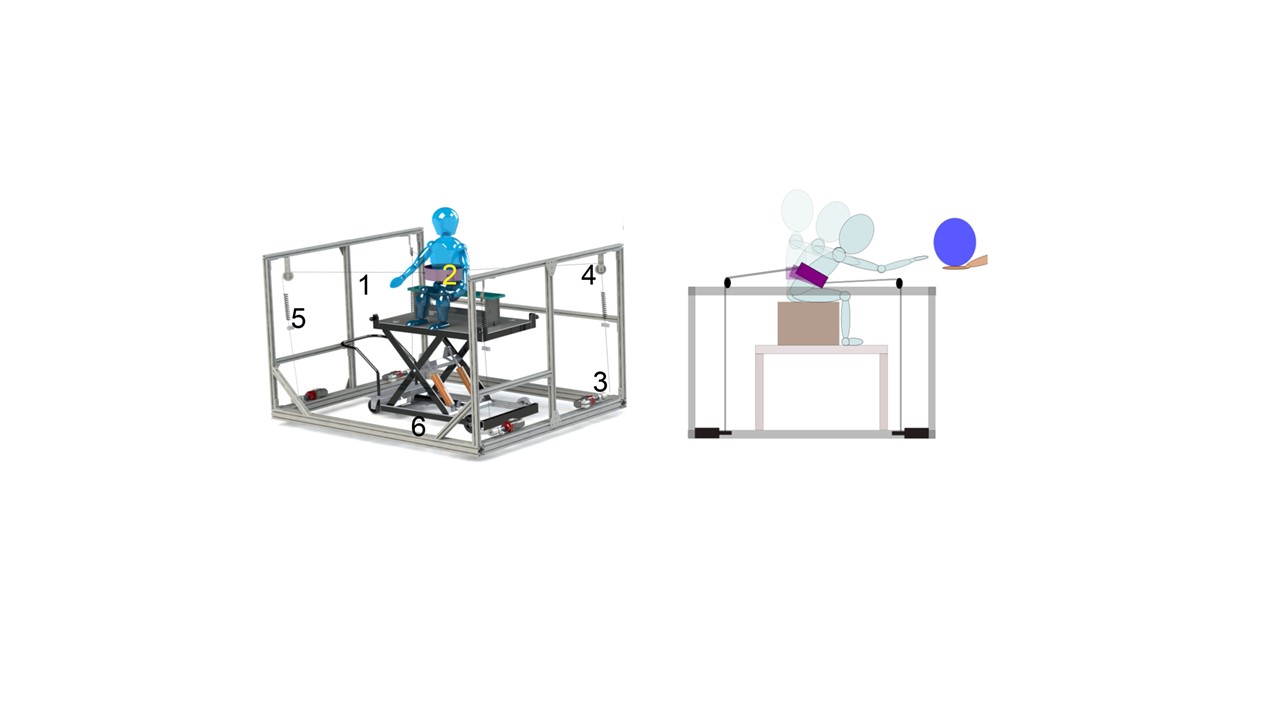Researchers at Columbia Engineering report that their newly developed robotic Trunk Support Trainer (TruST), when combined with active practice of postural movements, improves trunk and reaching control in children with CP who have impaired sitting control. This finding is in line with their earlier study on adults with spinal cord injury who were able to expand their sitting workspace when TruST actively assisted their trunk movements.
The team then investigated the effectiveness of TruST on children with trunk control issues. They ran a two-year-longitudinal pilot study on four children aged 6-14 years with CP and sitting control problems to examine how TruST technology can be used to provide an optimal amount of trunk support while the children are trained in activities and games. After completion of TruST-intervention, the children showed short- and long-term postural and reaching control improvements. Most importantly, they were able to perform all the game-oriented activities without any external help coming from TruST, supportive straps, or a clinician. The study was published online today by IEEE Transactions of Neural Systems and Rehabilitation Engineering.
“The ability to control the trunk in sitting posture is pivotal for everyday functions such as sitting, feeding, and social interactions,” says Sunil Agrawal, professor of mechanical engineering and of rehabilitation and regenerative medicine. “Our Trunk Support Trainer, which we call TruST, is an innovative robotic device that helps physical therapists to not only support the children in the region of the trunk where they suffer from weakness and incoordination but also challenge them to perform rehabilitation tasks outside their base of support to improve their movement and coordination.”
TruST is a motorized cable-driven belt placed on the child’s trunk that exerts active-assistive forces when the trunk moves beyond postural stability limits. This means that TruST can provide assistance that is individualized for each child and can be systematically reduced as children improve trunk control during the training. Thus, TruST addresses postural-task progression in each training session by matching the assistive-force fields to the ability of each child to control the trunk in sitting. The idea is to assist the child’s motor efforts when the trunk moves beyond these stability limits by modulating the wire tensions.
TruST-intervention is intense, about two hours per session, but completed over a relatively short time period for a total of 12 training sessions. Children had to wear additional strapping around the waist to secure their sitting position during the first 6 training sessions. However, after the 6th session, children acquired a level of trunk control that allowed the researchers to remove the waist straps so they could sit independently for training purposes.
“We wanted to scientifically demonstrate how robotic TruST can be used to deliver an intense activity-based postural and reaching training to improve the functional sitting abilities of children with CP and trunk control problems”, says Victor Santamaria, a physical therapist and associate researcher scientist in Agrawal’s Robotics and Rehabilitation Laboratory, and first author of the paper.
Recent developments in robotic equipment have enabled clinicians to address engagement, repetition, and intensity for their patients to practice task-oriented movements in CP. A team led by Agrawal, together with other researchers at Teacher’s College and the Columbia University Irving Medical Center, recently won a five-year National Institutes of Health R01 award (#1R01 HD101903-01) to conduct a randomized clinical trial.
The project—”Improving seated postural control and upper extremity function in bilateral CP with a robotic Trunk-Support-Trainer (TruST)”—will involve up to 80 children with poor trunk control. Some will use the TruST robotic rehabilitation while others will try conventional rehabilitation. This new NIH study will compare the efficacy of the motorized TruST to engage children in play-oriented practice while advancing their skill progression with static trunk support.
“Our new NIH project is a randomized clinical trial with a large sample size to study the efficacy of TruST-intervention as a unique therapeutic solution to promote seated functional abilities in children with bilateral CP,” Agrawal adds.
About the Study
The study is titled “Promoting Functional and Independent Sitting in Children with Cerebral Palsy Using the Robotic Trunk Support Trainer.”
Authors are: Victor Santamaria, Moiz Khan, Tatiana Luna, Jiyeon Kang, Joseph Dutkowsky, Andrew Gordon, and Sunil Agrawal, Department of Mechanical Engineering, Columbia Engineering.
The pilot study was partially funded by the Langer Foundation as administered by The Order of Malta.
The authors declare no financial or other conflicts of interest.
###
LINKS:
Paper: https://ieeexplore.ieee.org/document/9233922
DOI: 10.1109/TNSRE.2020.3031580
http://engineering.columbia.edu/
https://www.engineering.columbia.edu/press-releases/agrawal-robotic-trunk-spinal-cord-injury
https://www.engineering.columbia.edu/faculty/sunil-agrawal
https://me.columbia.edu/
https://roar.me.columbia.edu/home
https://www.engineering.columbia.edu/press-releases/agrawal-robotic-trunk-spinal-cord-injury
###
Columbia Engineering
Columbia Engineering, based in New York City, is one of the top engineering schools in the U.S. and one of the oldest in the nation. Also known as The Fu Foundation School of Engineering and Applied Science, the School expands knowledge and advances technology through the pioneering research of its more than 220 faculty, while educating undergraduate and graduate students in a collaborative environment to become leaders informed by a firm foundation in engineering. The School’s faculty are at the center of the University’s cross-disciplinary research, contributing to the Data Science Institute, Earth Institute, Zuckerman Mind Brain Behavior Institute, Precision Medicine Initiative, and the Columbia Nano Initiative. Guided by its strategic vision, “Columbia Engineering for Humanity,” the School aims to translate ideas into innovations that foster a sustainable, healthy, secure, connected, and creative humanity.


